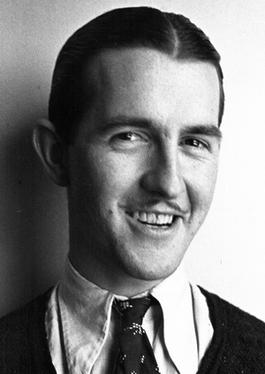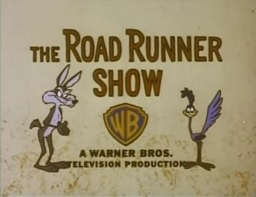Related Research Articles

Speedy Gonzales is an animated cartoon character in the Warner Bros. Looney Tunes and Merrie Melodies series of cartoons. He is portrayed as "The Fastest Mouse in all Mexico" with his major traits being the ability to run extremely fast, being quick-witted and heroic while speaking with an exaggerated Mexican accent. He usually wears a yellow sombrero, white shirt and trousers, and a red kerchief, similar to that of some traditional Mexican attires. To date, there have been 46 theatrical shorts made either starring or featuring the character.

Sylvester J. Pussycat Sr. is a fictional character, an anthropomorphic cat in the Looney Tunes and Merrie Melodies series of cartoons. Most of his appearances have him often chasing Tweety Bird, Speedy Gonzales, or Hippety Hopper. He appeared in 103 cartoons in the golden age of American animation, lagging only behind superstars Bugs Bunny, Porky Pig, and Daffy Duck. Three of his cartoons won Academy Awards, the most for any starring a Looney Tunes character: they are Tweetie Pie, Speedy Gonzales, and Birds Anonymous.

Robert Porter McKimson Sr. was an American animator and illustrator, best known for his work on the Looney Tunes and Merrie Melodies series of cartoons from Warner Bros. Cartoons and later DePatie–Freleng Enterprises. He wrote and directed many animated cartoon shorts starring Bugs Bunny, Daffy Duck, Porky Pig, Foghorn Leghorn, Hippety Hopper, Speedy Gonzales, and the Tasmanian Devil, among other characters. He also developed Bugs Bunny's design in the 1943 short Tortoise Wins by a Hare.

Hippety Hopper is a young kangaroo character in the Warner Bros. Looney Tunes series of cartoons. Robert McKimson introduced Hippety Hopper in Hop, Look and Listen (1948), which established the pattern for future Hippety Hopper cartoons. The character appeared in 14 theatrical cartoons between 1948 and 1964.

The Goofy Gophers are animated cartoon characters in Warner Bros.' Looney Tunes and Merrie Melodies series of cartoons. The gophers are small and brown with tan bellies and buck teeth. They both have British accents. Unnamed in the theatrical cartoons, they were given the names Mac and Tosh in the 1960s TV show The Bugs Bunny Show. The names are a pun on the surname "Macintosh". They are characterized by an abnormally high level of politeness.

Tweetie Pie is a 1947 Warner Bros. Merrie Melodies cartoon directed by Friz Freleng. The short was released on May 3, 1947, and stars Tweety with Sylvester, who is called "Thomas" in this cartoon.
Warner Bros. Cartoons, Inc. was an American animation studio, serving as the in-house animation division of Warner Bros. during the Golden Age of American animation. One of the most successful animation studios in American media history, it was primarily responsible for the Looney Tunes and Merrie Melodies series of animated short films. The characters featured in these cartoons, including Bugs Bunny, Daffy Duck, and Porky Pig, are among the most famous and recognizable characters in the world. Many of the creative staff members at the studio, including directors and animators such as Chuck Jones, Friz Freleng, Robert McKimson, Tex Avery, Robert Clampett, Arthur Davis, and Frank Tashlin, are considered major figures in the art and history of traditional animation.

The Road Runner Show is an American Saturday morning animated anthology series which compiled theatrical Wile E. Coyote and the Road Runner cartoons from the Looney Tunes and Merrie Melodies, which were produced by Warner Bros. Cartoons between 1949 and 1964. Several of the shorts, especially the ones produced from 1965 onward, were produced by DePatie–Freleng Enterprises after Warner Bros. closed their animation studio. DePatie–Freleng Enterprises provided the animation for the show's intro, closing credits as well as the wrap-around bumpers.
Bugs Bunny's Howl-oween Special is a Looney Tunes animated Halloween television special directed by David Detiege, which first aired on CBS on October 26, 1977.
The Astroduck is a 1966 Warner Bros. Looney Tunes cartoon directed by Robert McKimson. The short was released on January 1, 1966, and stars Daffy Duck and Speedy Gonzales.
Go Go Amigo is a 1965 Warner Bros. Merrie Melodies cartoon directed by Robert McKimson. The short was released on November 20, 1965, and stars Daffy Duck and Speedy Gonzales.
This is a listing of all the animated shorts released by Warner Bros. under the Looney Tunes and Merrie Melodies banners between 1960 and 1969. A total of 147 shorts were released during the 1960s.
Freudy Cat is a 1964 Warner Bros. Looney Tunes animated short directed by Robert McKimson. The short was released on March 14, 1964, and stars Sylvester the Cat, Sylvester Jr. and Hippety Hopper.
Well Worn Daffy is a 1965 Warner Bros. Looney Tunes animated short directed by Robert McKimson. The short was released on May 22, 1965, and stars Daffy Duck and Speedy Gonzales.
A Taste of Catnip is a 1966 Warner Bros. Merrie Melodies cartoon directed by Robert McKimson. The short was released on December 3, 1966, and stars Daffy Duck and Speedy Gonzales with cameos by Sylvester the Cat and Hector the Bulldog. It was the final overall theatrical classic-era Warner Brothers cartoon featuring Sylvester and Hector during the golden age of American animation.
Daffy's Diner is a 1967 Warner Bros. Merrie Melodies cartoon directed by Robert McKimson. The short was released on January 21, 1967, and stars Daffy Duck and Speedy Gonzales. It was the final Warner Bros. cartoon to be produced by DePatie–Freleng Enterprises.
A-Haunting We Will Go is a 1966 Warner Bros. Looney Tunes cartoon directed by Robert McKimson. The short was released on April 16, 1966, and stars Daffy Duck, Speedy Gonzales and Witch Hazel. As with the other Witch Hazel cartoons, June Foray voices Witch Hazel while Mel Blanc voices Speedy Gonzales, Daffy Duck, and Daffy's nephew.
References
- ↑ Beck, Jerry (1991). I Tawt I Taw a Puddy Tat: Fifty Years of Sylvester and Tweety. New York: Henry Holt and Co. p. 151. ISBN 0-8050-1644-9.
- ↑ Lenburg, Jeff (1999). The Encyclopedia of Animated Cartoons. Checkmark Books. p. 137. ISBN 0-8160-3831-7 . Retrieved 6 June 2020.